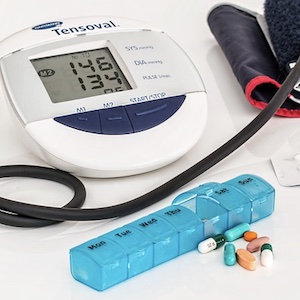Prevalence and determinants of permanent atrial fibrillation in post-menopausal hypertensive women

All claims expressed in this article are solely those of the authors and do not necessarily represent those of their affiliated organizations, or those of the publisher, the editors and the reviewers. Any product that may be evaluated in this article or claim that may be made by its manufacturer is not guaranteed or endorsed by the publisher.
Authors
Objective. We studied the prevalence and major predisposing factors of permanent atrial fibrillation (PAF) in a population of hypertensive post-menopausal (HPMW) women. Materials and Methods. We enrolled 125 consecutive HPMW with PAF, 125 HPMW in sinus rhythm were the control group (CG). Women with valvular heart disease, coronary artery disease, WPW syndrome, left ventricular (LV) ejection fraction <45% and thyroid disorders were excluded. The mean age was similar: 53±3 years for women on PAF and 51±6 for women with sinus rhythm (P<0.45). All women who underwent M-B mode echocardiography, LV mass, function, and left atrial (LA) volume were assessed according to American Society of Echocardiography guidelines. Diabetes was assessed according to American Diabetes Association guidelines. Results. In a population of 8945 consecutive women, 4497 were hypertensive (50.2%) and 125 were on PAF (0.3%). We observed a highly significant difference between the two groups in relation to obesity: 31 (24.8%) in the AF-group and 15 (12%) in CG, Chi-squared 10, P<0.0016, OR 2.8, 95%; to increased LA volume: 37 (29.6%) in AF-group and 13 (10.4%) in CG, Chi-squared 14.4, P<0.0001, OR 3.62, 95%. No difference in diabetes: 30 (24%) in AFgroup and 28 (22.4%) in CG, Chi-squared 0.09, P<0.76, OR 1.09, 95%, and LV diastolic dysfunction (LVDD): 24 (19.2%) in AF-group and 20 (16%) in CG, Chi-squared 0.44, P<0.5, OR 1.25, 95%. In contrast to what was expected LV hypertrophy had a lower incidence of 59 (47.2%) in AF-group than in CG 84 (67.2%), Chi-squared 10.21, P<0.0014, OR 0.44, 95%. Conclusions. The prevalence of PAF in HPMW is not elevated, obesity and increased LA volume are strong determinants of PAF, not depending on age. LVDD, LV hypertrophy, and diabetes status seem not to play a relevant role as PAF determinants.
How to Cite

This work is licensed under a Creative Commons Attribution-NonCommercial 4.0 International License.
PAGEPress has chosen to apply the Creative Commons Attribution NonCommercial 4.0 International License (CC BY-NC 4.0) to all manuscripts to be published.






